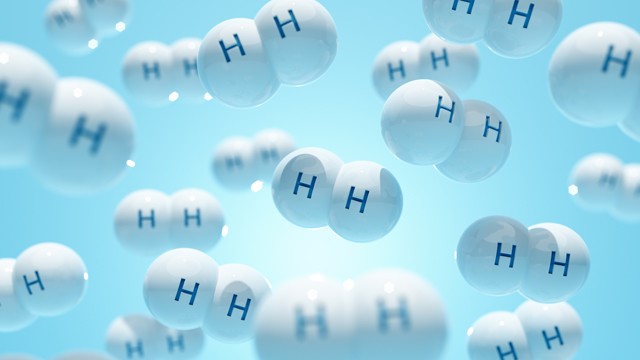Hydrogen
Hydrogen
The chemical element hydrogen has the symbol H and the atomic number 1. The lightest element is hydrogen. Under normal circumstances, hydrogen is a gas composed of diatomic molecules with the formula H2. It is colorless, odorless, tasteless, non-toxic, and extremely flammable. Hydrogen is the most abundant chemical element in the universe, accounting for around 75% of all ordinary matter. The Sun, for example, is mostly made up of hydrogen in its plasma state. The majority of hydrogen on the planet is found in molecule forms like water and organic substances. Each atom of the most common hydrogen isotope has one proton, one electron, and no neutrons.
Despite being the most prevalent element in the universe (three times more abundant than helium, the next most abundant element), hydrogen only makes up around 0.14 % of the Earth's crust by weight. It does, however, result in high quantities in oceans, ice caps, rivers, lakes, and the atmosphere as part of the water. Hydrogen is found in all animal and vegetable tissue, as well as petroleum, as part of a large number of carbon compounds. Even though it is commonly stated that carbon compounds are more numerous than those of any other element, the fact is that hydrogen is present in practically all carbon compounds and forms a variety of compounds with all other elements, therefore hydrogen compounds may be more numerous.
One of the goals that countries throughout the world have set for the future is to decarbonize the planet. Decarbonizing the production of an element like hydrogen, resulting in green hydrogen, is one of the keys to achieving this goal, as hydrogen now accounts for more than 2% of total global CO2 emissions.
Hydrogen is a non-polluting alternative to methane or natural gas. It is the most plentiful chemical element, accounting for around 75% of the mass of the universe. However, while it is found in practically all living organisms' molecules, it is extremely rare as a gas, with less than one part per million by volume. The challenge is to use hydrogen as a gas on a wide scale to fuel homes and industries. Hydrogen can be generated from a variety of resources.
Why is hydrogen important as a future clean energy source?
Fuel is a substance that can be consumed to generate energy. When a fuel is burned, chemical links between the elements in the fuel are dissolved, and the elements react chemically with oxygen.
We have been using natural gas to heat our residential areas, as well as power plants, for many years. The predominant component of natural gas from oil and gas sources is methane.
Natural gas is used because it represents a widely available resource, it is accessible, and is a cleaner option compared with coal, the dirtiest fossil fuel that we have relied on for heating and electricity generation in the past. Natural gas produces heat when it is burned. Carbon dioxide, on the other hand, is a waste product that, when released into the atmosphere, contributes to climate change. The only byproduct of hydrogen combustion is water vapor.
What is the difference between blue hydrogen and green hydrogen?
One of two basic processes is used to generate blue hydrogen from nonrenewable energy sources. The most frequent method for producing bulk hydrogen is steam methane reformation, which accounts for the majority of global output. This process employs a reformer, which produces hydrogen and carbon monoxide by reacting steam with methane and a nickel catalyst at high temperatures and pressures.
Autothermal reformation, on the other hand, uses oxygen, carbon dioxide, or steam to combine with methane to produce hydrogen. The challenging part of these two technologies is that they produce carbon as a by-product, necessitating the use of carbon capture and storage (CCS).
Electricity is used to power an electrolyzer, which separates hydrogen from water molecules to make green hydrogen. No harmful by-products are coming from this procedure, which yields pure hydrogen. Because this approach relies on electricity, it also has the potential to divert any excess electricity – which is difficult to store (such as excess wind power) – to electrolysis, where it can be converted into hydrogen gas and stored for future energy demands.

Is hydrogen being used as a fuel?
Hydrogen is used as a fuel. Vehicles that run on hydrogen fuel cells are already available. There are more than 150 public hydrogen refueling stations in Japan, allowing you to fill up just like in the case of gasoline or diesel and this can be done in a timely manner. Hydrogen is also an important lightweight fuel option for transportation by road, air, and sea.
What are the potential challenges to hydrogen's adoption as a clean energy source?
So that it becomes a viable alternative to methane, hydrogen must be produced at a large scale and at a low cost, and existing infrastructure must be modified. The good news is that hydrogen can be transferred over existing gas pipes, minimizing interruption and lowering the cost of constructing a new hydrogen transmission network.
